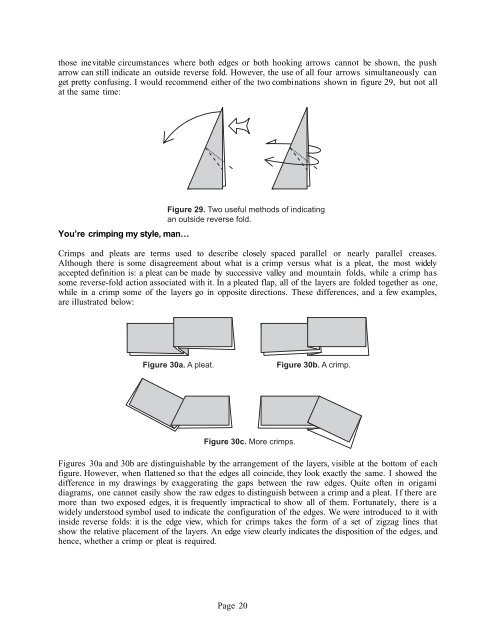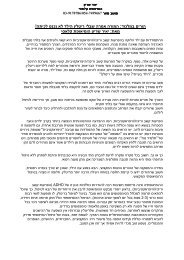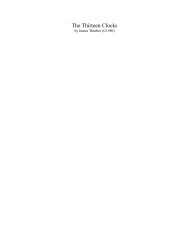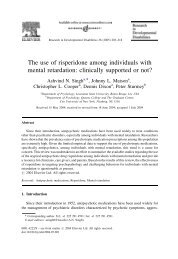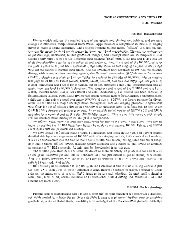Origami Diagramming Conventions: A Historical Perspective
Origami Diagramming Conventions: A Historical Perspective
Origami Diagramming Conventions: A Historical Perspective
You also want an ePaper? Increase the reach of your titles
YUMPU automatically turns print PDFs into web optimized ePapers that Google loves.
those inevitable circumstances where both edges or both hooking arrows cannot be shown, the push<br />
arrow can still indicate an outside reverse fold. However, the use of all four arrows simultaneously can<br />
get pretty confusing. I would recommend either of the two combinations shown in figure 29, but not all<br />
at the same time:<br />
You’re crimping my style, man…<br />
Figure 29. Two useful methods of indicating<br />
an outside reverse fold.<br />
Crimps and pleats are terms used to describe closely spaced parallel or nearly parallel creases.<br />
Although there is some disagreement about what is a crimp versus what is a pleat, the most widely<br />
accepted definition is: a pleat can be made by successive valley and mountain folds, while a crimp has<br />
some reverse-fold action associated with it. In a pleated flap, all of the layers are folded together as one,<br />
while in a crimp some of the layers go in opposite directions. These differences, and a few examples,<br />
are illustrated below:<br />
Figure 30a. A pleat.<br />
Figure 30b. A crimp.<br />
Figure 30c. More crimps.<br />
Figures 30a and 30b are distinguishable by the arrangement of the layers, visible at the bottom of each<br />
figure. However, when flattened so that the edges all coincide, they look exactly the same. I showed the<br />
difference in my drawings by exaggerating the gaps between the raw edges. Quite often in origami<br />
diagrams, one cannot easily show the raw edges to distinguish between a crimp and a pleat. If there are<br />
more than two exposed edges, it is frequently impractical to show all of them. Fortunately, there is a<br />
widely understood symbol used to indicate the configuration of the edges. We were introduced to it with<br />
inside reverse folds: it is the edge view, which for crimps takes the form of a set of zigzag lines that<br />
show the relative placement of the layers. An edge view clearly indicates the disposition of the edges, and<br />
hence, whether a crimp or pleat is required.<br />
Page 20


